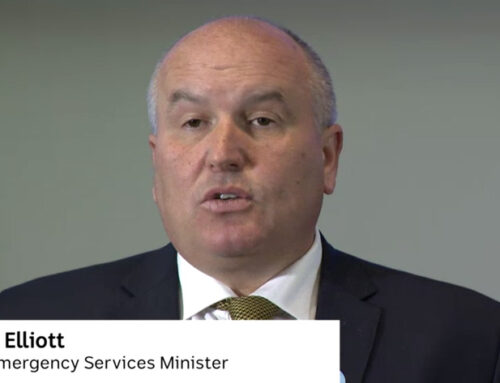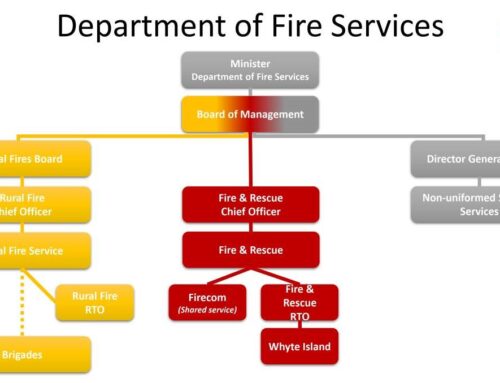The nation’s volunteer firefighting force has been reduced by about 18,000 members over the past decade, with volunteer chiefs blaming an ageing cohort and toxic workplace cultures.
The biggest decreases occurred in Victoria and Western Australia, with a more modest reduction on average in NSW, raising concerns about state fire services’ ability to combat fires during prolonged bushfire seasons.
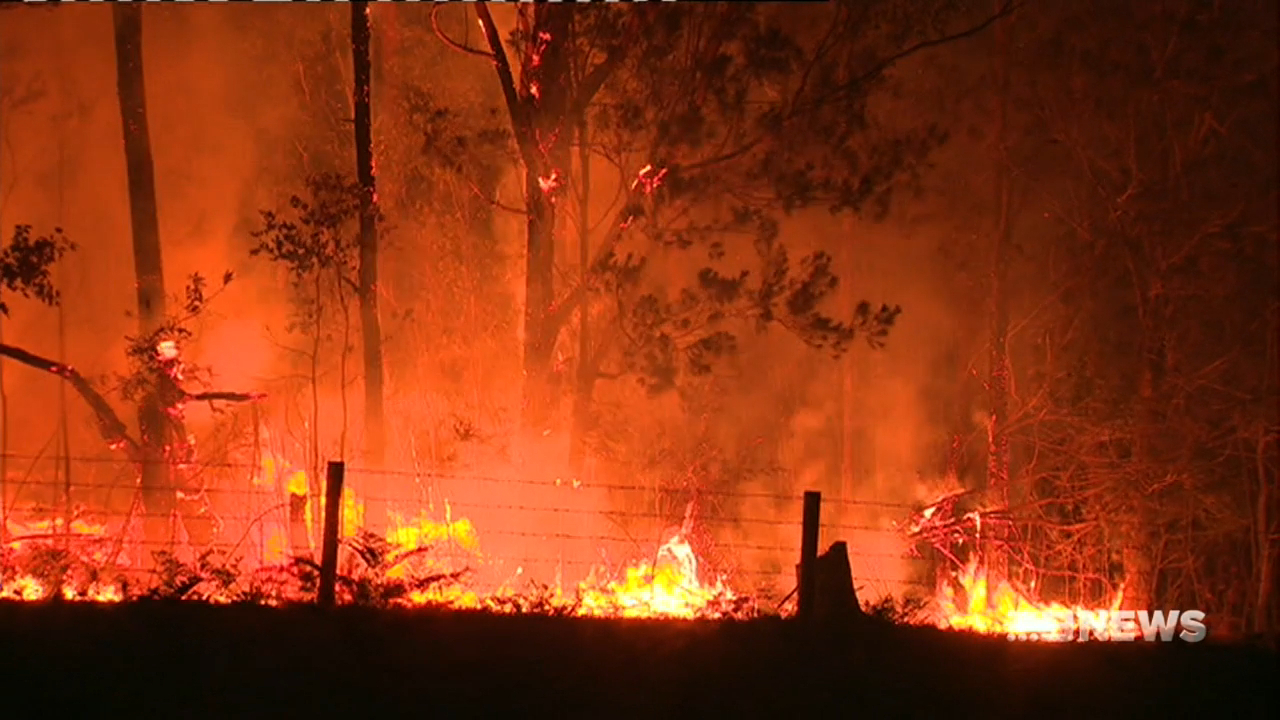
NSW firefighters on the frontline are now eligible for up to $300 a day in financial support. The Age
Victoria’s Country Fire Authority shed more than 5000 volunteers in eight years, while NSW’s Rural Fire Service has lost more than 3000 in four years.
The presidents of the volunteer firefighting associations of Victoria and NSW said bullying and discrimination and an inability to recruit and retain young firefighters led to the reductions.
“We’ve had a lot of bullying and harassment claims, as highlighted in a recent upper house inquiry … and it’s influenced people leaving, absolutely,” said Mick Holton, president of NSW’s Volunteer Fire Firefighters Association.
“As a service, the RFS should be engaging [with the issue] – they shouldn’t be using the boys’ club to direct things, they should be setting an example.”
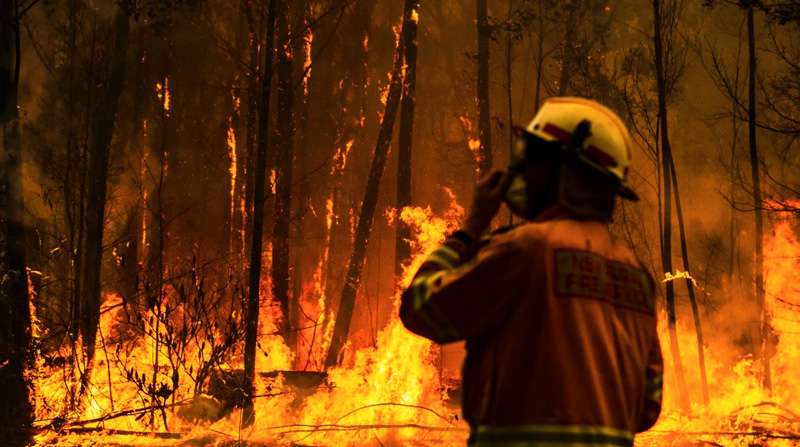
A rural fire service firefighter attempts to protect a property during the Currowan fire in NSW. CREDIT:DION GEORGOPOULOS
Volunteer Fire Brigades Victoria chief executive Adam Barnett said a long-running schism between volunteer and career firefighters was turning people away from volunteering.
“How [volunteers] have been treated over the last few years goes to the heart of the question of why anyone would volunteer … people are fed up,” he said.
“Volunteers are feeling huge injustices are being done … that’s what’s driving the current cohort out … they’re leaving hurt.”
Mr Barnett’s comments were dismissed by CFA chief executive Steve Warrington, who said he rejected that “there is a widespread disrespect towards volunteers or widespread organisational cultural issues driving changes in numbers”.
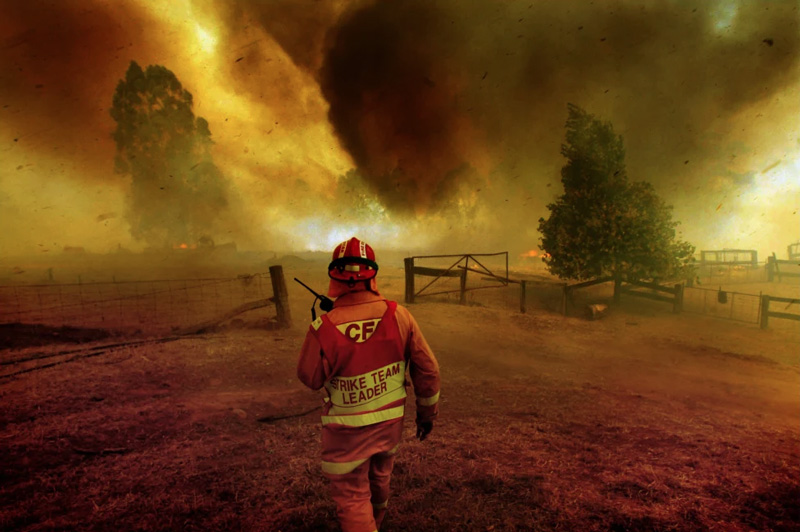
Victoria’s Country Fire Authority has shed more than 5000 volunteers in eight years. CREDIT:SIMON SCHLUTER
He said rural population decline, ageing volunteers, changes to operations and localised volunteer dissatisfaction were factors in the decline.
In a statement, an RFS spokeswoman said “the RFS makes no apology for dealing with and removing members for inappropriate conduct and behaviour”. The spokeswoman said almost two-thirds of members who left the service last year were removed by the RFS, while about one-third resigned.
Mr Barnett and Mr Holton, who represent tens of thousands of volunteers from their respective states, said it was becoming harder to recruit the next generation of volunteers.
“Certainly in rural areas, there’s a demographic issue, and there’s not much we can do about it. If a particular area doesn’t have younger people then it’s pretty hard to get them into a brigade,” Mr Holton said.
Only one in 10 RFS volunteers is aged 25 or younger, and the median age of NSW volunteers is more than 50.
CFA figures on the age breakdown of Victorian volunteer firefighters were unavailable.
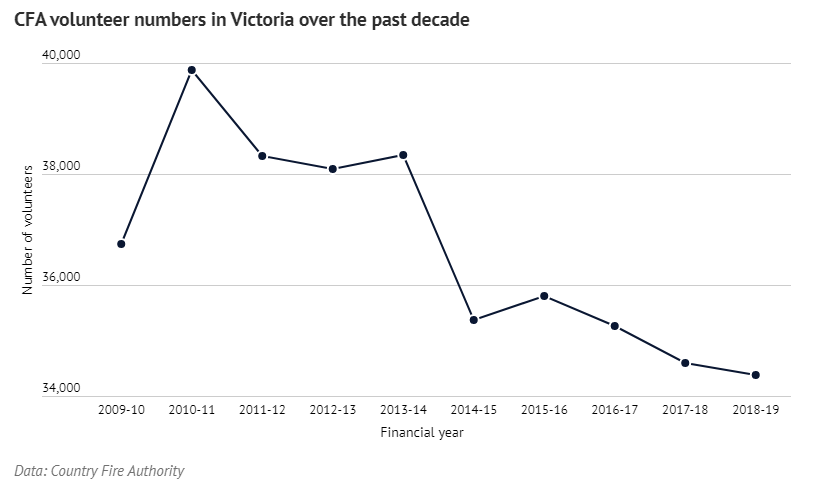 The CFA’s volunteer base has shrunk since the Black Saturday bushfires in 2009, and is about 5000 volunteers short of its own target.
The CFA’s volunteer base has shrunk since the Black Saturday bushfires in 2009, and is about 5000 volunteers short of its own target.
About 34,000 operational volunteers will be on hand to battle fires in Victoria this summer, 6 per cent fewer than the 10-year average of just under 37,000.
The RFS’s volunteer base has shrunk by about 1000 volunteers from its long-term average of more than 72,000.
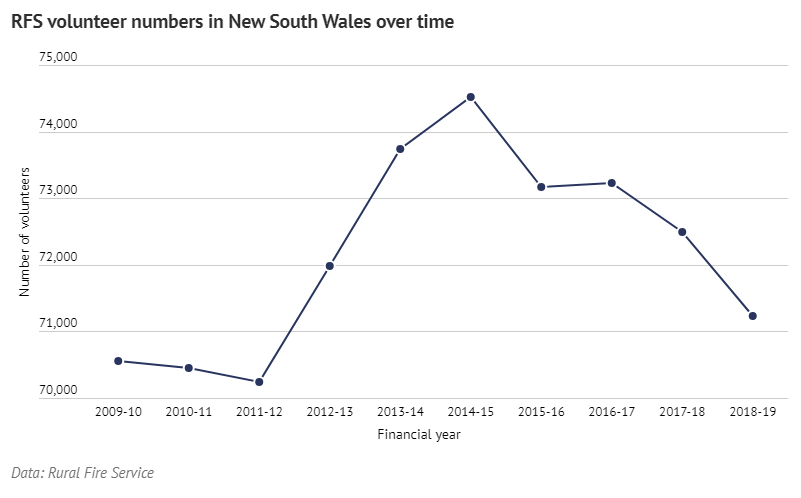 Volunteer numbers in Western Australia’s firefighting service have reduced by almost 15 per cent on the 10-year average.
Volunteer numbers in Western Australia’s firefighting service have reduced by almost 15 per cent on the 10-year average.
In South Australia, volunteer numbers have decreased by more than 5 per cent over the past decade, while Queensland’s firefighting service has seen a 3000-person drop in just two years.
More than 5 million hectares have burnt in bushfires this season, 1000 homes have been lost and nine people have died, with NSW the worst-affected state.
The CFA said it had drawn on only about 20,000 volunteers for any of the past five years, meaning its 34,000 volunteers would be adequate to deal with any threat.
Volunteer Fire Brigades Victoria’s Mr Barnett said he was “frustrated at people talking [the declining volunteer numbers] down and saying it’s not a problem”.
“When you have protracted fires and multiple fires, you need tens of thousands on the books, even if they don’t get used every year.”
Paul Sakkal
https://www.theage.com.au/national/victoria/bullying-culture-blamed-as-volunteer-firefighter-numbers-drop-across-australia-20191229-p53nfo.html

